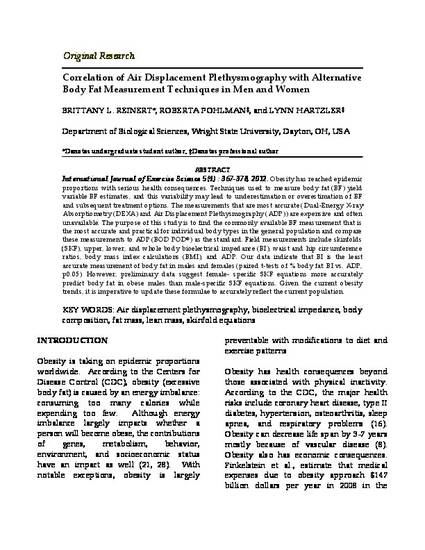
Obesity has reached epidemic proportions with serious health consequences. Techniques used to measure body fat (BF) yield variable BF estimates, and this variability may lead to underestimation or overestimation of BF and subsequent treatment options. The measurements that are most accurate (Dual-Energy X-ray Absorptiometry (DEXA) and Air Displacement Plethysmography (ADP)) are expensive and often unavailable. The purpose of this study is to find the commonly available BF measurement that is the most accurate and practical for individual body types in the general population and compare these measurements to ADP (BOD POD®) as the standard. Field measurements include skinfolds (SKF), upper, lower, and whole body bioelectrical impedance (BI), waist and hip circumference ratios, body mass index calculations (BMI), and ADP. Our data indicate that BI is the least accurate measurement of body fat in males and females (paired t-tests of % body fat: BI vs. ADP, p0.05). However, preliminary data suggest female- specific SKF equations more accurately predict body fat in obese males than male-specific SKF equations. Given the current obesity trends, it is imperative to update these formulae to accurately reflect the current population.
Available at: http://works.bepress.com/lynn_hartzler/43/
